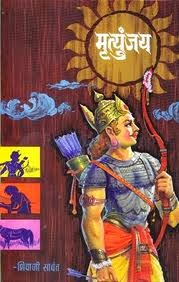Book Review: The Bhagavad Gita
 |
| The Holy Geeta |
ISBN: 9788175970748
Author: Swami Chinmayananda
Pages: 1273
The Bhagavad Gita is the core text of Hinduism. In its entire flow, the Bhagavad Gita is fairly simple and straightforward. It opens with the Pandava prince Arjuna preparing to lead his troops into battle and develops cold feet upon seeing mnay of his family members in the opposition ranks. He feels it is a sin to kill so many great men such as his teacher, his grandfather who are part of the opposition.
Despite Arjuna preparing for the war, haunted by the guilt of killing his relatives, he drops his bow and succumbs to the situation by proposing escapist tendencies. Krishna, the charioteer of the Pandava prince understands his plight and for motivating him, begins the long discourse called "The Bhagavad Gita" and tells him about the reality of Yoga, soul, meditation, life, death and reincarnation. While we would be tempted to perceive the narrator of the Gita as the blue-eyed boy from Vrindavan, it is important and advised that we try to look beyond the physical form of Krishna.
The book is divided into 18 chapters in 700 shlokas Each teaching touches upon a topic designed to facilitate understanding. Krishna is presented as a patient and well-meaning teacher, who lists the advantages and disadvantages of following his counsel. The poetic narrative is sometimes very cryptic; a familiarity with sacred aspects of Hinduism clarifies some concepts. The book is a concoction of mythology and sagacity; and the reader is well served by a reflective reading pace. Many of the proverbial verses are as challenging as riddles.
The narrative proposes the means by which perfect peace can be attained; and throughout the book, there are guidelines intended to initiate the process of equanimity. There is a meditative aura about The Bhagavad-Gita. The steps required to reach inner bliss are sometimes vague, and sometimes quite obvious. I liken the book to a well from which one can heave buckets of wisdom. However, the bygone centuries have not tainted the book's messages. The text invites a reader to reassess his or her concept of self. The impulse to understand, self, others, and the world in which we life, is readily encouraged. Also, throughout the book, knowledge is a key to comprehending the essence of being.
The Bhagavad Gita is a revered Hindu scripture that forms a part of the Indian epic of The Mahabharata. It presents a dialogue between the Pandava prince Arjuna and his charioteer and guide, Lord Krishna. The duo’s conversation on a variety of philosophical topics has long been considered to be a lifestyle guide, according to the principles of Vedanta. However, with the passage of time and changing moral values, the essence of the Gita has been diluted, misinterpreted, and often lost in a sea of confusion.
Through this book, Swami Chinmayananda seeks to reacquaint the readers with this invaluable guide for living. He presents the glory of the universe and its vision of an omniscient, omnipotent God. He explores numerous concepts such as the beauty of the spirit, the science of spiritual growth, disillusionment, and moral and spiritual decay.
The book discusses how the delusion and dominance of the ego clouds the true self, giving rise to mental confusion and a distinct lack of inner peace. It shows how the readers can apply the principles of the Gita to their daily lives and enrich them with love, laughter, spiritual beauty, and a closeness to the divine.
Originally published in 1976 by Central Chinmaya Mission Trust, the book has undergone various reprints. Through The Holy Geeta, Swami Chinmayananda seeks to reintroduce readers to the essence of the Bhagavad Gita, helping them integrate its valuable lessons into their ultra-modern lives.


Comments